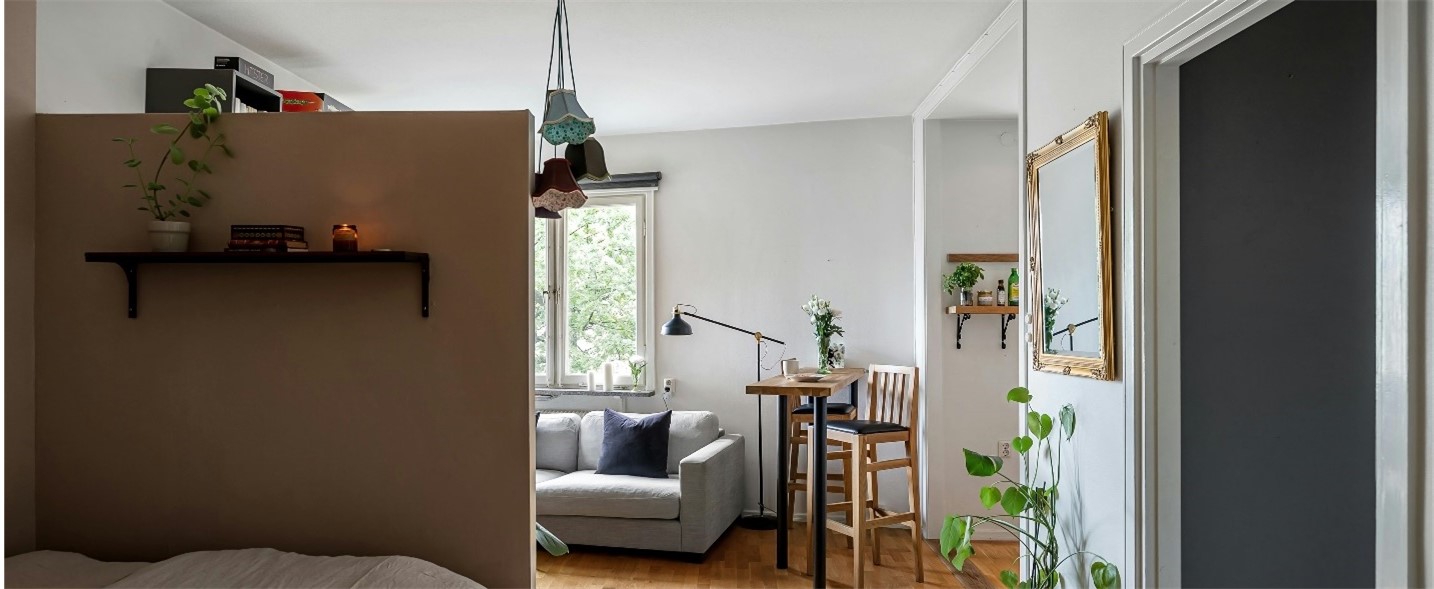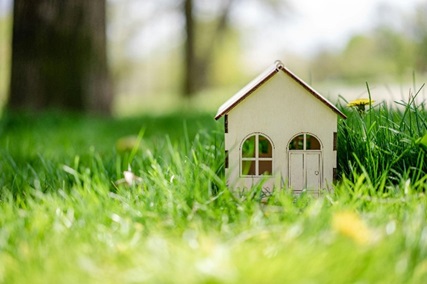
At Elm Trails, a subdivision of San Antonio, the giant developer Lennar sells compact homes for just $150K or so. The houses themselves take up less than 700 square feet. They’re placed on 20-foot lots with little backyards and no garages. The least expensive offering is a new, 350-square-foot house for $130K. So far, 55 buyers have opted in.
Why is this so important? Because super-small homes are part of a growing — make that shrinking — trend.
The quest to make houses affordable is “changing notions of what a middle-class life looks like,” reports The New York Times. Today’s generation of home buyers wants “less carbon and clutter than the standard two-car suburb,” the Times explains.
Even Regular Homes Are Getting Smaller
Across the country, new homes now average just under 2,200 feet. That makes this generation’s typical first home about 4% smaller than the last generation’s.
And no wonder. In recent years, the cost of homes and all that go into making them have skyrocketed. There’s been a terrible lack of “starter homes” that first-time buyers need.
Making matters worse for buyers, mortgage interest rates have shot up.
Builders soon found themselves frustrated by the slow market. They sought ways to control costs: fewer closets, cabinets, and windows. Narrower doors. Less roomy rooms.
Could a minimalist approach to building attract renters and turn them into home buyers?
Accessibly Priced Homes Rely on Zoning Support
Bend, Oregon is another expensive metro area. Need a home there for under $300K? Good luck. Now, Oregon-based Hayden Homes offers houses in the Cinder Butte community in Redmond, where buyers can check out 600-square-foot houses. Hayden’s success there has led the company to offer small homes beyond the Bend area. Many of the buyers are, indeed, people who want to stop renting.
Hayden is riding a policy wave. Oregon has relaxed the zoning rules that long kept subdivisions filled with freestanding homes only.
And so, companies like Hayden found a budding niche market that’s a serious selling opportunity. It’s similar to the opportunity that Lennar uncovered when its tiny homes near San Antonio’s East Side sold like hotcakes, as the San Antonio Business Journal reported.
Granted, the homes get mixed reviews from potential buyers out there. One commenter, going by the screen name Johnny Appleseed, expressed a typical criticism:
Unacceptably high priced for the size of home and patch of grass. $150k should buy a 1,200 square foot house, with a basement and a 500 square foot attached garage, on a 1/2-acre of deeded land.
What do you think of these homes? The San Antonio Business Journal provides a helpful slideshow. But whether you like the homes or hate them, there’s a clear message in Lennar’s success in filling them. Even the big builders are testing the potential market for tiny homes. It appears to be working.
Here Are Just Some of the Small Home Builders

The New York Times, Tech Crunch, and Business Insider have all covered the rise of small-home builders. If you’re interested in acquiring a house with a small footprint, here are just a few of the many interesting companies you might want to follow:
- Hiatus Homes produces cozy clusters of 500-square-foot dwellings in Oregon. They also do tiny cottages (accessory dwelling units) on customers’ existing properties.
- Boxabl, a startup backed by building giant DR Horton, offers 375-square-foot, pre-fab casitas for $60K plus installation costs. This company aims to produce some 5,000 homes annually.
- In San Francisco, Cosmic has thrown its hat into the ring. Its studio and 1- or 2-bedroom accessory dwelling units are self-powered and also generate electricity for the property’s main home. That’ll help offset the high price tag. A studio starting at 385 square feet costs close to $300K. Then again, this is San Francisco.
- In Los Angeles, where many homes cost more than $1 million, check out Cover’s in-law suites and guest houses.
- Looking to live off-grid, with a small floor plan? Quebec City-based Minimaliste creates and delivers tiny homes (on foundations or on wheels). Complete with heat-pump-based HVAC systems, some are customized for the environment where they’ll be installed. A Minimaliste tiny home can be had for under $100K. Most buyers live in New York, California, Washington, the Carolinas, Texas, New Mexico, and Ontario, Canada.
Do I get a property deed for a house on wheels? Read more on Deeds.com.
The other side of this trend has selling points for people who already own their home and their land. Consider the OBY co-op in California’s Bay Area. Property deed holders can earn around $500 monthly for signing up to rent out carbon-neutral cottage units in their back yards. OBY pairs homeowners with renters.
OBY’s motto? Fight the housing crisis, resist climate catastrophe… make some extra money.
OBY handles the setup. The homeowners pay nothing for the installation work.
Home Depot Is Selling Cottages Now, in a Clear Sign of Tinier Times
The rising market for affordable housing units isn’t lost on Home Depot. The home improvement company now advertises several lines of tiny homes and backyard cottages. “Among the offerings,” Lance Lambert reports, “is a 444-square-foot two-bedroom rose cottage priced at $63K.”
Don’t forget to check for deed restrictions before installing or renting out an extra unit on your property.
Today, even Amazon and Etsy sell and deliver tiny homes. Before you click that screen, though, some due diligence is necessary. Buying a mail-order or install-it-yourself tiny home kit from an ecommerce site or your local Home Depot will be in vain if your subdivision isn’t zoned for these products.
While some states and towns are keen on unconventional housing to help hopeful buyers, others have held onto zoning and permitting rules that essentially say: Not in your backyard.
Supporting References
Conor Dougherty and David Montgomery for The New York Times: The Great Compression (first published online on Feb. 17, 2024 and updated Feb. 22, 2024; citing the housing data firm Zonda and other sources).
Abha Bhattarai for The Washington Post via WashingtonPost.com: Less Money, Less House: How Market Forces Are Reshaping the American Home (Mar. 10, 2024).
Lance Lambert for ResiClub via ResiClubAnalytics.com: Housing Market Affordability Is So Strained That Home Depot Is Selling Tiny Homes for $63,000 (Apr. 05, 2024).
The Real DealTM, by Korangy Publishing Inc.: Lennar Sees Success In First Tiny-Home Community (Feb. 18, 2024).
Eric McConnell for Benzinga via Yahoo Finance: Could Lennar Homes’ Tiny House Community in San Antonio Be the Answer to America’s Affordable Housing Crisis? (Apr. 9, 2024).
Steven Santana for MySA (San Antonio Express-News, published by Hearst Newspapers, LLC) via MySanAntonio.com: Video – Texas TikTok Realtor Shows Off Interior of San Antonio Tiny Homes (Mar. 13, 2024).
Ramzi Abou Ghalioum for the San Antonio Business Journal: Lennar Finds Massive Success With Tiny Homes in San Antonio (Feb. 13, 2024; updated Feb. 15, 2024).
Daniel Houston for Inman: “$100K Jail Cell”: Social Media Drags Price Point of Texas Tiny Homes (Aug. 31, 2023).
And as linked.
More on topics: Tiny houses to help people become homeowners, Accessory dwelling units
Photo credits: Lisa Anna and Oleksandr P, via Pexels/Canva. Images are not intended to portray homes produced by, or for, any companies named in this article.
